- Administrator
- Albums and Singles
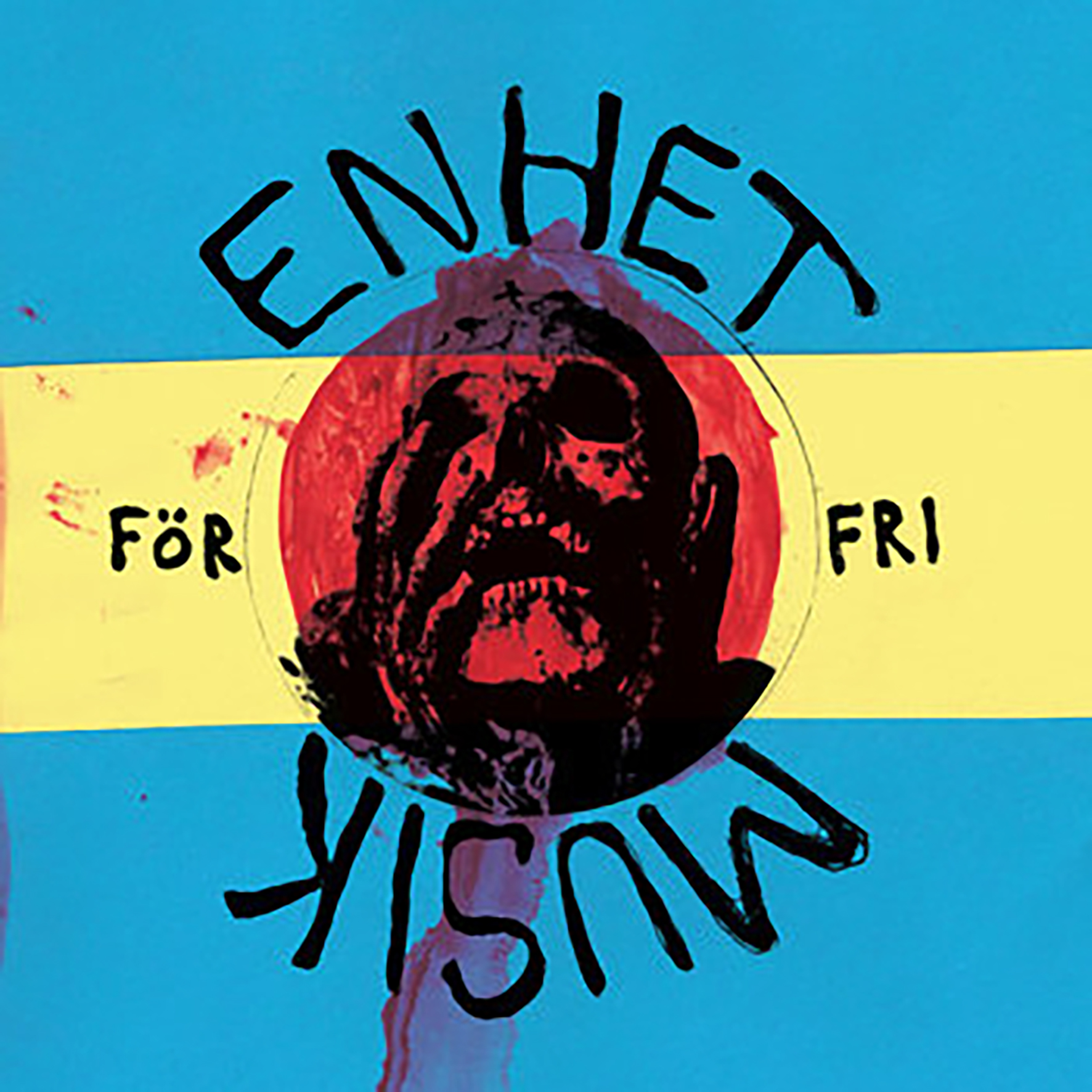 Releases from this Swedish free-folk ensemble have historically not been particularly easy to obtain, as only their reissued debut (2015's Inom Dig, Inom Mig) has thus far seen wide distribution (and most are not digitally available either). Happily, their fifth album is now getting a well-deserved reissue too, as 2017's Det Finns Ett Hjärta Som För Dig ("There is a heart for you") will see a US physical release in December. I actually snapped up the original version when it came out on Omlott, as I love this band, but I have yet to hear the first three releases that followed Inom Dig. I am certainly curious to hear what directions they take, as the gulf between Enhet För Frei Musik's debut and this album is quite a large and unexpected one: Inom Dig had a disjointed, haunted, and almost Jandek-ian feel, whereas this latest opus blends simple, tender and melodic songs with wonderfully strange and hallucinatory collages. While both albums are excellent and unique in their own right, Det Finns Ett Hjärta Som För Dig sounds far more like the work of a project with a fully defined and realized identity.
Releases from this Swedish free-folk ensemble have historically not been particularly easy to obtain, as only their reissued debut (2015's Inom Dig, Inom Mig) has thus far seen wide distribution (and most are not digitally available either). Happily, their fifth album is now getting a well-deserved reissue too, as 2017's Det Finns Ett Hjärta Som För Dig ("There is a heart for you") will see a US physical release in December. I actually snapped up the original version when it came out on Omlott, as I love this band, but I have yet to hear the first three releases that followed Inom Dig. I am certainly curious to hear what directions they take, as the gulf between Enhet För Frei Musik's debut and this album is quite a large and unexpected one: Inom Dig had a disjointed, haunted, and almost Jandek-ian feel, whereas this latest opus blends simple, tender and melodic songs with wonderfully strange and hallucinatory collages. While both albums are excellent and unique in their own right, Det Finns Ett Hjärta Som För Dig sounds far more like the work of a project with a fully defined and realized identity.
All five members of Enhet För Frei Musik have been involved in an array of individual and collaborative projects in the Swedish underground over the years, but only Sofie Herner (Neutral) and Dan Johannson (Neutral, Sewer Election) are familiar to me.I suppose that is apt, as it is more or less impossible to tell what anyone besides Herner (vocals) contributes at any given moment or even if all five members are actively involved in every song.If they are, I am absolutely stumped about what role each artist could possibly be playing, as many pieces feature just one instrument.For example, the opening "När Ska Min Själ Finna Ro" ("When Will My Soul Find Peace") is built from just Herner's voice and a simple organ melody, while some other pieces feature just an acoustic guitar. A number of the band's members have noise and field recording backgrounds, however, so perhaps there is a team effort involved in making every piece sound like a wobbly and hissing boombox recording.It does not seem like that would require a lot of effort to achieve, so it is more likely that the band just sporadically convenes in various incarnations, then collaboratively shapes those disparate recordings into coherent albums with a unified aesthetic.I do like the murky, lo-fi quality of these recordings quite a lot though, as it suits the spontaneous, child-like nature of the songs.At its best, this album often feels like a fragmented and impressionist audio diary that is both nakedly honest and appealingly enigmatic.
For the most part, the most memorable pieces on the album tend to be the ones that prominently features Herner's disarmingly lovely and fragile-sounding vocals.There are only a handful of them though and some are quite short.Aside from the aforementioned opener, the band are at their most melodic and song-minded with "Det Finns Ett Hjärta" ("There is a Heart") and "Bara Min Egen" ("Just My Own"), both of which feel like heartfelt, guileless, and emotionally direct love songs.To a certain degree, that is not expected terrain for a band that contains so many noise and noise-adjacent artists, but it also makes a lot of sense in a perverse way: great noise artists attempt to cathartically express something raw, real, and undiluted by artifice, while pieces like this album's "Det Finns Ett Hjärta" achieve a more nuanced, vulnerable, and melodic equivalent to that.That said, Enhet För Frei Musik also prove themselves to be exceptionally adept at crafting gorgeous and unique sound collages.In "Variationer Av En Längtan Till Gud" ("Variations Of A Longing For God"), for example, a distorted and hiss-ravaged chorale abruptly transforms into a strangled, squirming saxophone and spoken-word interlude before blossoming into a final melodic coda.Like most pieces on the album, it feels more like a fragment or a vignette than a fully formed piece, but the first theme is an achingly lovely one that resembles a choir of angels faintly and fleetingly piercing through a caustic veil of noise and static.In between those two poles of collage and song, there are also an eclectic array of more sketchlike pieces that range from whistling in a sea of tape hiss ("Blomsteräng") to unaccompanied sax solos ("Solokvist") to something that sounds like a cross between a post-punk band and a snakecharmer ("Din Synd").  
The crown jewel of the album, however, is the enigmatic and haunting 10-minute closer "Fragment Av En Midsommarnattsdröm" ("Fragment of a Midsummer Night's Dream").Notably, it is one of the only songs on the album that stretches much beyond three minutes, as well as the only piece that feels like it has a purposefully structured and evolving arc.At its heart lies a sample of an impassioned speech that unfolds over a warm and twinkling bed of synths, yet it undergoes a series of intriguing transformations and intrusions that include a traditional folk ensemble and something that sounds like an Instagram influencer hawking sweaters.I dearly wish I understood Swedish, as it feels like there is something deeply poignant and profound at piece's center.Of course, it is also possible that the mystery of the sonorous monologue only enhances the piece's depth and power, as I quite like the feeling of a deep revelation elusively hidden within a disorienting swirl of unfamiliar languages, decontextualized fragments, temporal dislocation, and general mindfuckery.I suppose that is an apt summary of the album as a whole too, which is why Enhet För Frei Musik is such a compelling and refreshing band: I cannot pretend to fully understand their methods, but their strange mosaics have an uncanny way of amounting to an experience much greater than the sum of the individual parts. Moreover, they have found a way to reignite Sweden's rich tradition of iconic psych bands like Pärson Sound that feels like a new chapter rather than a mere homage, as this quintet have fully internalized that organic, unselfconscious free experimentation (rather than style) was the true soul of that illustrious milieu.
Samples can be found here.
Read More
- Administrator
- Albums and Singles
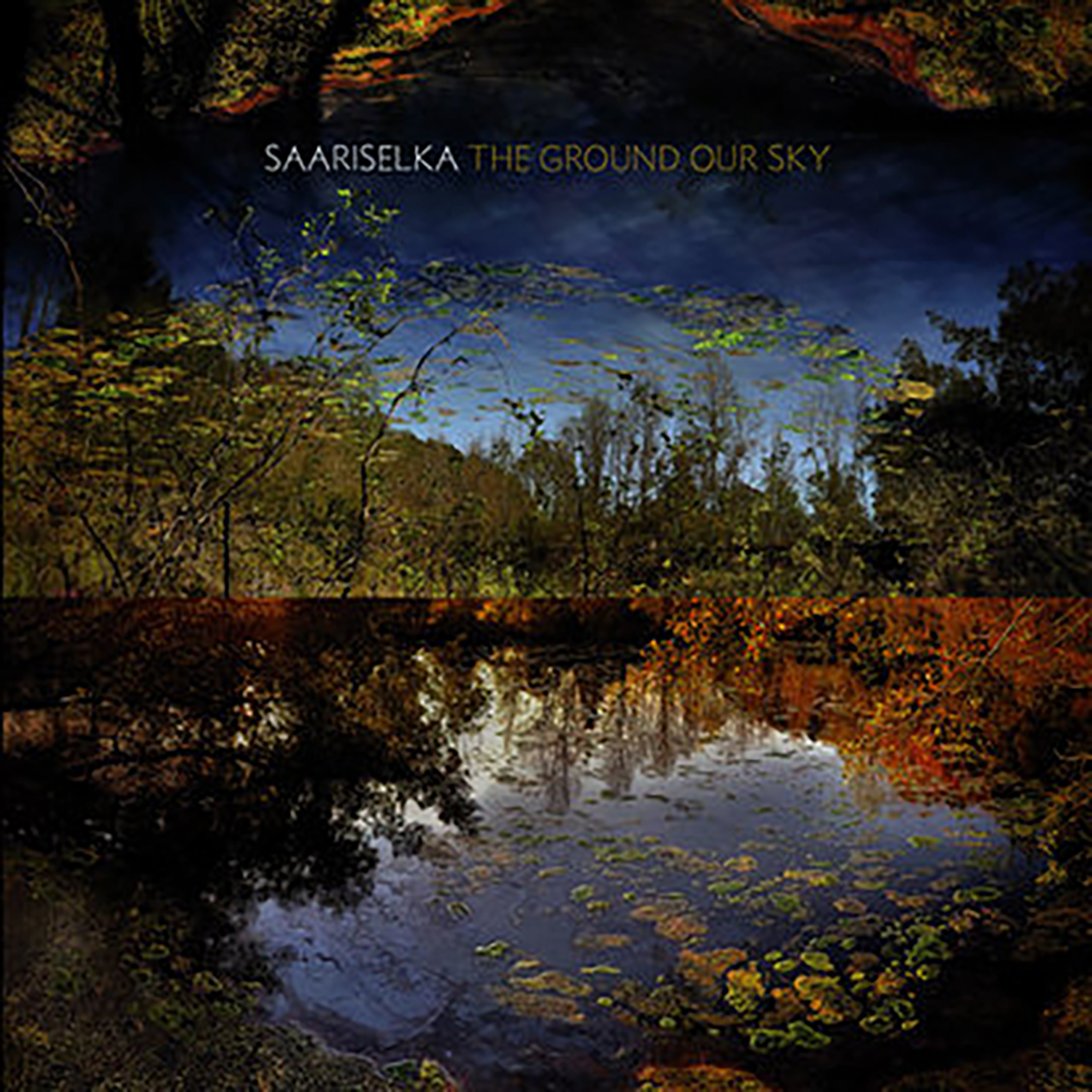 It is quite rare for two artists with successful solo careers to team up for a genuinely strong collaborative project that offers a fresh vision, but this debut full-length from Marielle V. Jakobsons and Chuck Johnson is the elusive exception that is arguably better than the sum of its parts. I say "arguably" only because each artist is already responsible (or at least partly responsible) for some albums that I have absolutely loved in the past. Notably, however, both artists have undergone significant stylistic evolutions in their careers, which may very well be the secret to a truly egoless and organic confluence of visions: neither was rigidly tied to a signature style, so finding a fertile common ground was probably just a natural outcome after playing together for a while. That said, the clear antecedent to this project is Johnson's gorgeous Balsams album (his first on pedal steel). As someone who was thoroughly beguiled by that album, it never would have occurred to me that Johnson might have been able to reach even greater heights with the help of a sympathetic foil on Fender Rhodes, but I am delighted that it occurred to Jakobsons (and that she was completely right).
It is quite rare for two artists with successful solo careers to team up for a genuinely strong collaborative project that offers a fresh vision, but this debut full-length from Marielle V. Jakobsons and Chuck Johnson is the elusive exception that is arguably better than the sum of its parts. I say "arguably" only because each artist is already responsible (or at least partly responsible) for some albums that I have absolutely loved in the past. Notably, however, both artists have undergone significant stylistic evolutions in their careers, which may very well be the secret to a truly egoless and organic confluence of visions: neither was rigidly tied to a signature style, so finding a fertile common ground was probably just a natural outcome after playing together for a while. That said, the clear antecedent to this project is Johnson's gorgeous Balsams album (his first on pedal steel). As someone who was thoroughly beguiled by that album, it never would have occurred to me that Johnson might have been able to reach even greater heights with the help of a sympathetic foil on Fender Rhodes, but I am delighted that it occurred to Jakobsons (and that she was completely right).
As someone who is quite fond of both Marielle Jakobsons' early work as Darwinsbitch and her collaborations with Agnes Szelag (Myrmyr, EJS), I still occasionally have a hard time wrapping my mind around the fact that the same artist is also behind Date Palms and Saariselka.Every great artist changes over the course of their career, but the aesthetic gulf between Jakobsons' days as a formidable violinist and her recent sun-dappled, meditative reveries is quite a substantial one.While her newer albums are too varied and distinctive to quite bleed into the New Age vogue, she has definitely become synonymous with a style of earthy, laid-back psychedelia that feels very "California" to me.
In that regard, Jakobsons and pedal steel-era Johnson are very much kindred spirits and The Ground Our Sky is an archetypal example of that evocative stylistic niche.In fact, that terrain proves to be surprisingly fertile and shifting creative ground for the pair, as these six songs take a number of different and intriguing directions.To some degree, it feels like Jakobsons and Johnson alternated taking the lead on songwriting, as some pieces feel more driven by organ and some by guitar.On the strongest pieces, however, the instruments merge together so organically and beautifully that they seem to have sprang into the world fully formed."Void" is the most sublime success story in that vein, as Jakobsons' twinkling organ arpeggios leave lovely vapor trails while Johnson's swooning and chiming pedal steel weaves a shimmering haze of its own.It is a strikingly beautiful and lush piece of music, as well as one of the few songs in which Jakobsons sings, resulting in quite a woozily wonderful swirl of dreampop heaven.
Elsewhere, the opening "Horizons" is yet another gem, as a lazily winding and chiming organ motif blossoms into a vivid new vista once Johnson's ringing arpeggios, sliding chords, and shivering sustained notes start to elegantly intertwine with the original theme."Into The Wind" is a highlight as well, as a gently swaying and languorous web of arpeggios slowly coheres into a hushed vocal piece embellished by lazily glimmering organ melodies and bleary pedal steel glissando.I am also quite fond of the more diffuse and ambient-minded "Neochrome," in which a gently rippling, slow-motion succession of organ chords provides a loose backdrop for pedal steel that feels like a soft-focus ghost ballet.The closing "Afterlight" is another piece that approximates ambient drone territory, but it is a far more radiant variation, as Johnson's guitars lazily smear together over a warm bed of drones like the final streaks of a gorgeous pink and violet sunset.Only the sleepily burbling "Subsurface" feels like a misstep: it is all sunny psych shimmer without any added depth or shadow to give it some necessary gravitas.That said, there are plenty of artists who have made careers mining similar territory, so perhaps it is just more of a direction that is subjectively (if emphatically) not for me.Saariselka are far too good to be delving into Kosmische pastiche or homage.
For the most part, however, every direction that Jakobsons and Johnson explore tends to be quite an appealing and absorbing one: The Ground Our Sky simultaneously delivers on the promise of 2018's Ceres and expands that earlier vision in some very inspired ways.I was especially struck by "Void," as I had not anticipated this project ever creeping into Julee Cruise-esque "pop" territory (or doing it quite so beautifully if they did).The real magic of this union transcends the success of any individual song though, as Jakobsons and Johnson seem very much attuned to the same cosmic vibrations and their twin visions complement each other perfectly.Also, I was surprised anew by how much emotion and heavenly beauty Johnson is able to conjure from a pedal steel, as I have never viewed it as a particularly promising lead instrument (and tend to prefer my guitars inventively misused rather than played properly).Between this album, Balsams, and Ayami, however, Johnson has decisively won me over to both the instrument and his artistic vision for it–the man is on quite an impressive run of releases these days and this album only continues that trend.It is damn hard to make radiant, gentle, and quietly lovely music that has real depth and soul: when they are at their best, Saariselka manage to do it better than just about anybody.
Samples can be found here.
Read More
- Administrator
- Albums and Singles
Read More
- Administrator
- Albums and Singles
 The last time I Love You But I’ve Chosen Darkness released a record, George W. Bush was president, Twitter was the latest social networking innovation, Burial was a new buzz word on everyone’s lips, and James Brown was still alive and touring. The Knife were riding high on the success of Silent Shout and Brainwashed readers were placing records by bands like Wolf Eyes, Comets on Fire, and Xiu Xiu high atop the annual reader’s poll. I Love You But I’ve Chosen Darkness won some recognition that year too. According to Plan nabbed a spot in the top five singles of the year and "The Owl" nearly beat out Boards of Canada’s "Dayvan Cowboy" for Brainwashed’s best loved music video of 2006. Then a seemingly terminal eight-year silence ensued. Now the band has returned with Dust, as if nothing happened. Their lineup is unchanged, Ministry’s Paul Baker is still behind the mixing board, and the artwork is as austere as before. And though much in the music is also familiar, the group’s focus has changed. They cast a wider net on Dust. There’s more variety and the songs are denser this time around, layered thick with circular melodies and crisscrossing guitars.
The last time I Love You But I’ve Chosen Darkness released a record, George W. Bush was president, Twitter was the latest social networking innovation, Burial was a new buzz word on everyone’s lips, and James Brown was still alive and touring. The Knife were riding high on the success of Silent Shout and Brainwashed readers were placing records by bands like Wolf Eyes, Comets on Fire, and Xiu Xiu high atop the annual reader’s poll. I Love You But I’ve Chosen Darkness won some recognition that year too. According to Plan nabbed a spot in the top five singles of the year and "The Owl" nearly beat out Boards of Canada’s "Dayvan Cowboy" for Brainwashed’s best loved music video of 2006. Then a seemingly terminal eight-year silence ensued. Now the band has returned with Dust, as if nothing happened. Their lineup is unchanged, Ministry’s Paul Baker is still behind the mixing board, and the artwork is as austere as before. And though much in the music is also familiar, the group’s focus has changed. They cast a wider net on Dust. There’s more variety and the songs are denser this time around, layered thick with circular melodies and crisscrossing guitars.
I Love You But I’ve Chosen Darkness open Dust with "Faust," a song they beat out with surgical exactitude. It’s fast paced, built on a thumping rhythm section, and driven by a simple guitar riff that winds in and out of the lead guitar’s meandering accents. The song twitches with energy, as if the band were just itching to play together again, but the performance is controlled, channeled into a concise, coolly played four minutes. "Come Undone," and, to some extent, "Stay Awake," feed on that same energy. A quick moving, tightly wound melody skips through the heart of all three songs, and on each the bass and drums add variety to the already rhythm heavy core. The lead guitarist extracts little hidden melodies from inside that wave of sound and spins them through the air, completing the illusion that these songs are all unspooling as they fall through space.
These are songs the band could have written in 2007 or '08, after wrapping up their tour for Fear Is on Our Side. They’re white knuckle rockers that burn with the same fire as "According to Plan," but they are far more insistent, far less translucent, and far from the norm.
The rest of Dust courses down a surprising path, starting with "Heat Hand Up." It’s there that I Love You But I’ve Chosen Darkness first switch to a rarefied, pseudo-romantic mode. The guitars space out and harmonize, the drummer sits back on his throne and relaxes, and the music suddenly turns diaphanous. "Safely" continues in the same way, adding xylophone and a humming e-bow drone to the mix. It’s a colorful, delicately played ballad that depends on texture as much as rhythm and melody, and it sets the table for Dust’s mid-album climax.
"You Are Dead to Me" floats on a blanket of distorted synthesizer loops, cut up vocals, and a series of long, moaning guitar notes, all sans percussion. The effect is like the one depicted in cartoons, where a character falls to the center of the Earth only to find that it’s a hollow, weightless ball. Faceless voices and shifting clouds of color hover in this formless place, but they never condense. Instead, the music evaporates.
That weightlessness infects all of side two. The drum set returns on "69th Street Bridge" and turns the song like a top, etching a circular figure into the music that reaches out to the guitars and synthesizers at the periphery and sends them turning round and round the multi-tracked vocals. "The Sun Burns Out" returns to a backbeat base, but the gleaming guitars almost snuff it out in a haze of harmonies, and closer "WAYSD" opens the album all the way up by putting the bass front and center with the drums. The guitars and keyboards decorate their slow, psychological crawl with dramatic bursts, but the rhythm plows forward undeterred, the air around it slowly escaping into the void.
Eight years is a long time for a band to go without a release. I Love You But I’ve Chosen Darkness make it sound as though it were only eight months. Dust thrives not because the band made any quantum leaps during their sabbatical, but because they opted to make small changes instead, and because they learned to open their sound up without losing what made them so great in the first place.
samples:
 
Read More
- Administrator
- Albums and Singles
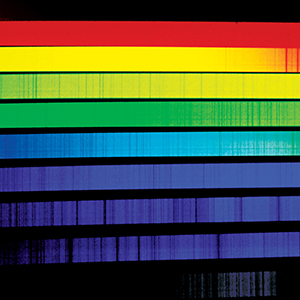 On this self-titled LP, the core duo of Sungod: Michael Sharp and Braden Balentine, create an odd combination of synth heavy folk infused rock music. A certain genre-hopping, overall post-rock feel may be notable, but for the most part the album is a strange amalgam of styles, combined in a way that sounds very different than the sum of its parts.
On this self-titled LP, the core duo of Sungod: Michael Sharp and Braden Balentine, create an odd combination of synth heavy folk infused rock music. A certain genre-hopping, overall post-rock feel may be notable, but for the most part the album is a strange amalgam of styles, combined in a way that sounds very different than the sum of its parts.
The most consistent thread running throughout the five pieces that make up this album is a clearly prog rock influenced approach to keyboard parts. The lengthy "Heavy Water" mixes in synth strings within a passage of expansive, flanging ambience.What the duo build up around that is where the strengths lie:the slow build into the final few minutes once the guitar expands and the drums drop in channels the most rock moments of Spacemen 3.
The other long composition, "L'ame de Toute Etoile" stands perfectly as a companion piece.The 1970s synth melodies form the core, and then the duo bring in the drums and lead guitar to increase the pace and heaviness.The uptempo structure and metronomic percussion calls to mind Neu!'s "Hallo Gallo", but with a looser, more "fun" feel to it.
The shorter pieces mixed around these two are the ones in which there is more variation, but also a bit less complexity.The acoustic and slide guitar of "Come Gently, the Wind" drift into a country/folk vibe, while "Burn Ward Blues" sits more between classic rock and blusey twang.Amongst both of these, a hint of folk appears as well, with vocals and electronics buried low in the mix.
"Shiftless en Nkawkaw" may be shorter, but also has the most distinctive sound on here, due to additional bass by Alex Hughes and Kristine Reaume’s flute.Compared to the rest, it is more an instantaneous"rock" piece, propelled by Hughes' bass.A chorus of vocals is present, but far off in the distance, as if bleeding over from the studio next door.Its first half is dense and claustrophobic, but on the second half things loosen up:noisy synths and erratic rhythms come in and make a mess of things.It seems as if the band is building the song to a dramatic climax, but instead they end things just as effectively by letting the individual instruments drift apart into playful chaos.
Along with the aforementioned proggy-ness to Sungod, there is also a certain outsiderness to their music as well.The duo happily pull from disparate genres multiple times in each song, and when the styles are placed alongside each other, they become something else entirely.The resulting album is murky, at times befuddling, but more often than not captivating.
samples:
 
Read More
- Administrator
- Albums and Singles
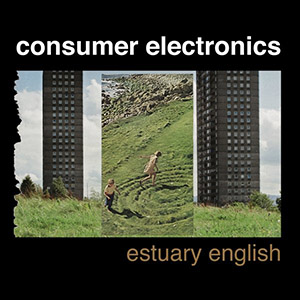 In the 32 years since beginning the project, Philip Best has made the transition from teenage instigator to respected artist and academic, with erratic smatterings of solo releases ever since. He might be best known for his time in Whitehouse, but the infrequent series of solo releases and collaborations as Consumer Electronics were nothing to be ignored either. Years in the making, Estuary English represents a new zenith in the project, in both content and presentation.
In the 32 years since beginning the project, Philip Best has made the transition from teenage instigator to respected artist and academic, with erratic smatterings of solo releases ever since. He might be best known for his time in Whitehouse, but the infrequent series of solo releases and collaborations as Consumer Electronics were nothing to be ignored either. Years in the making, Estuary English represents a new zenith in the project, in both content and presentation.
CE has been Best's (largely solo) project since its inception, although it has often been considered a footnote next to his role in Whitehouse (most obviously in their exceptionally strong final albums) and to a lesser extent his time as the vocalist/keyboardist in the rock incarnation of Ramleh.Estuary English, however, is purely his work.Even though legendary noise/electronic artist Russell Haswell and Best’s wife Sarah Froelich are significant contributors to this album and currently the project as a whole, it is Best and his singular lyrics and vocals that define this album.
It is the words and delivery of them that make this album the brilliant monstrosity that it is.Anyone familiar with Best's vocal style on the latter day Whitehouse records knows what to expect:an acidic, aggressive, unpleasant berating with a wry, sardonic hint of humor off in the corner.He shifts from viperous social commentator to sleazy pornographer and back again, snarling with a peerless malignance.What he does very well, however, is convey disgust like no one else can.Music is ripe with people who can do harsh and angry vocals with varying degrees of success, but no one matches Best’s tangible disdain and disgust that just drips from each sentence he spits out.
When the material on this album made its live debut, much fuss was made in the internet ghetto of noise message boards that "Co-opted by Cunts", heavily based around a standard 4/4 techno beat, meant CE was yet another noise project to go electronic and "normal".While I would have little concern if that did happen, noise fans can rest assured that the backing tracks of these eight songs get just as ugly as the vocals, even if the programmed beats are not harsh enough.
"Co-Opted" sees the trio using the most overt use of conventional rhythms, in the form of a skipping CD beat that eventually gets blended with noisy processed snares and drifting synth passages.Shades of Cabaret Voltaire and Throbbing Gristle and their early flirtations with drum machines are noticeable here more than anywhere else on the album.Best's vocals consist only of repeating the song’s title throughout, a noteworthy contrast, because this is musically the most complicated work on here, yet the most simple from a lyrical standpoint.
Beyond that, the use of beats and sequencers on the album are unconventional to say the least.The closest thing to a rhythm on "Teknon" is a flatulent bass synth pattern that underscores Best’s vocals, working excellently as an accompaniment while leaving the vocals the focus.The monotone low volume jackhammer beat of "Sex Offender Boyfriend", on the other hand, is less of a rhythm and more of an abrasive element that just happens to be made up of drum sounds, underscoring his most unhinged vocal performance to date.
The remaining pieces are more entrenched in the noise/power electronics style, which is sure to please those fans who are afraid of change."Affirmation" is slow, seasick buzzing synthesizers with random outbursts and heavily processed fragments of voice sneaking out demonically from the distance.Both "Come Clean" and "Estuary English" work as throwbacks to the genre's staple: walls of overdriven distortion and electronics, neither of which would have been out of place on a 2000s Whitehouse album.
Recognition has to be given to the quality presentation that Dirter has put forth on here.A weighty, glossy gatefold sleeve featuring all of the lyrics, and the album presented on two heavy weight 45rpm records, plus the first pressing including a CD version of the album mastered by Denis Blackham.The album visually exudes class, and is a perverse juxtaposition to what is contained on it.
My initial concern was the length of the album, clocking in at only 22 minutes.After the first playing, I do not think I would have wanted any more.Like Slayer's Reign in Blood or Whitehouse's Dedicated to Peter Kurten, putting too much more on here would have not only dulled its impact, but would have likely been overwhelming to listen to.The sheer force and intensity here is draining, so it works perfectly as a short forceful burst.Estuary English is disturbing, ugly, and at times horrifying, and that is what makes it one of the best records I have heard this year.
samples:
 
Read More
- Administrator
- Albums and Singles
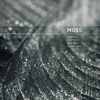 With its careful, hushed vibe and slow pacing, it is only all the more amazing that this 24 minute piece is the work of pure improvisation, without the benefit of practice or rehearsal. It is simply the product of four disciplined, like-minded individuals captured in the moment perfectly.
With its careful, hushed vibe and slow pacing, it is only all the more amazing that this 24 minute piece is the work of pure improvisation, without the benefit of practice or rehearsal. It is simply the product of four disciplined, like-minded individuals captured in the moment perfectly.
The four participants, Molly Berg (clarinet and vocals), Olivia Block (tapes and electronics), Steve Roden (lap steel guitar) and Stephen Vitiello (electric guitar), congregated for an impromptu performance late one night at a San Francisco cathedral.Given the nature of the performance and instrumentation, each individual can be heard clearly:Roden’s guitar appears early atop taped clatterings and subtle electronics from Block, which then is met by sparse, wordless vocals from Berg.
When she switches from vocals to clarinet, the piece gets sharper and a bit louder, but then calms back down, allowing bird chirps and gentle melodies to fill the opened space.Sparse electric guitar from Vitiello becomes audible, as does a deep, almost rhythmic loop of clacking sound, rocks perhaps?At this point each element that comes in sticks around, leading to a complex, but not overly dense mix, placing expansive electronic drones with what could be rainforest field recordings and repeated backwards melodies.With the clarinet leading, the closing moments end up taking along a subtle jazzy feeling.
While there is a noticeable improvisational feeling to be found, the four players synthesize their sounds together quite well, especially considering this isn’t extracted from a longer performance, and that there was no practice or rehearsal beforehand.Each artist can be heard, but no one overshadows the other, truly uniting them as a group.The result is a beautiful, understated performance that retains the live, at the moment feeling that was surely felt in the cathedral when it was recorded.
samples:
 
Read More
- Administrator
- Albums and Singles
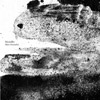 After two excellent recent split releases, the duo of Faith Coloccia and Aaron Turner have put out a full length CD that manages to spread out over an hour and still retain the variety of moody and complex sounds that they did so well in previous shorter bursts.
After two excellent recent split releases, the duo of Faith Coloccia and Aaron Turner have put out a full length CD that manages to spread out over an hour and still retain the variety of moody and complex sounds that they did so well in previous shorter bursts.
Between those two splits, Mamiffer did both denser heavy rock-influenced sounds as well as more pensive, piano driven ambient works, both of which receive good representation here.Above all, there’s an over-reaching sense of bombast and drama that, while tinged with prog-rock tendencies, never falls into any of the pretentious pitfalls that usually mar such works and instead have a regal flair most strive for, but few attain.
"As Freedom Rings" opens slowly, with a soft panned organ that picks up additional tones and sounds with each pass, bringing in electronic textures and washes of white noise.Like many of the pieces on here, Coloccia's piano playing eventually becomes the focus, flanked by synth layers, Turner's restrained guitar feedback, and hollow percussion.Layers come and go, eventually building to a dramatic crescendo that is punctuated with quiet, layered vocals; choral and chanted, that close the track powerfully.
The long, ambient "We Speak In The Dark" stretches out for over 20 minutes, beginning with expansive, drawn out notes of unclear origin that become more grounded when the piano arrives, a punchier contrast to the frozen tones off in the distance.It has a comparatively slower, more deliberate pace than before, but with more grandiose outbursts, including full string arrangements courtesy of Eyvind Kang, who also did such work with Sunn O)))'s recent Monoliths & Dimensions album.The chaotic, speaking in tongue vocals that are male and female, screamed, growled, and chanted add a frightening, inhuman like quality to a cinematic piece.
Piano and drums also characterize the final two pieces, both of which also include strings and guitar, but each go into drastically different territories."Eating Our Bodies" emphasizes the guitar a bit more, putting on a heavier, more tense sound that eventually closes in slow, dark and pounding territory.Conversely, "Iron Water" is more concise, first as a carefully measured piano and guitar duet that is simply beautiful before unraveling, leaving echoed vocals, ambience, and shimmering guitar noise in its wake.Even with the long subsonic rumbles that close the album, it has an overall lighter quality to it.
Like the split LPs I've reviewed recently, Mare Decendrii doesn’t fit into any specific genre, nor can it be easily explained or described, it simply is what it is.While the two on the surface sound nothing alike, there is a certain shared vibe with Earth’s more recent work.Both have a similar, cinematic feeling that conjures up a lot of feelings and images that strengthen the work.However, Mamiffer’s use of piano, strings, and more abstract electronic textures are what sets them apart, helping them carve out their niche.
samples:
 
Read More
- Administrator
- Albums and Singles
 Following 1983's Soul Possession, Annie moved into a shed in Adrian Sherwood’s garden and slowly began assembling an album's worth of new material with his then-wife, Kishi Yamamoto.  The new songs were very different than her previous work: the scary and disturbed-sounding elements completely disappeared and Annie began to make a conscious attempt to assimilate pre-rock influences like Marlene Dietrich and Edith Piaf into her work.  The actual impact of those divas on her sound was still fairly slight at this point (1987) though, as Jackamo turned out to be a very weird, difficult, and transitional album.
Following 1983's Soul Possession, Annie moved into a shed in Adrian Sherwood’s garden and slowly began assembling an album's worth of new material with his then-wife, Kishi Yamamoto.  The new songs were very different than her previous work: the scary and disturbed-sounding elements completely disappeared and Annie began to make a conscious attempt to assimilate pre-rock influences like Marlene Dietrich and Edith Piaf into her work.  The actual impact of those divas on her sound was still fairly slight at this point (1987) though, as Jackamo turned out to be a very weird, difficult, and transitional album.
This wasn't the first time that Kishi and Annie had worked together: Kishi had actually played a bit of synth and Chinese harp on Soul Possession and was probably responsible for some of its more outré textures, as she was an enthusiastic proponent of avant-garde classical and musique concrète.  Also returning to the fold were Dub Syndicate/African Head Charge percussionist Bonjo Iyabinghi Noah and –of course– master dub producer Adrian Sherwood.  The only major line-up change, in fact, was the departure of Crass and the arrival of stellar bassist Doug Wimbish (who later wound up joining Living Colour).  The presence of Wimbish made a huge difference, as he ensured that these songs had a fat, ribcage-rattling bottom end.
Oddly, despite the eclecticism of Annie and Kishi's inspirations, Jackamo is still very much a dub album (albeit an aberrant one).  With the very notable exception of an accordion-led cover of Charles Aznavour's "Hier Encore," the bulk of this album maintains a lumbering, slow-motion reggae feel buffeted by Sherwood's studio-tweaked electronics and Noah's omnipresent clattering hand-percussion.  "Hier Encore" was a very clear harbinger of what was eventually to come in the future, as it later reappeared in different form as "Yesterday When I was Young" on When Good Things Happen to Bad Pianos, but Annie's transformation into a singularly charming and urbane chanteuse was still nearly a decade away at this point.  For the rest of Jackamo, her vocals are still pretty tough and post-punky.  Sometimes that works beautifully, like in the blackly funny dance anti-anthem "Bastinado," but there are some serious misfires too.  I found the very hammy and shout-y "Jack Yo Mama" in particular to be almost unlistenable.  The very '80s metal guitar in "Rise" (and again on "Rise (dub)") also made for a somewhat rocky listening experience.  It would be another few years before Annie completely mastered balancing power with restraint and nuance.
Jackamo is my least favorite of Annie's early albums but it is important in the context of her evolution, as it provided a bridge between the superior but very different albums that bookended it (Soul Possession and Short and Sweet).  Also, it marked the first time when Annie's tenderness and wit started to conspicuously manifest themselves in her music.  She definitely took some wild chances too, like the prominent jungle noises in "Chasing the Dragon Down Broadway" and "Jackamo."  There is certainly no shortage of personality, attitude, imagination, or daring here, it's just that Annie hadn't quite fully come into her own yet as a songwriter (though the title piece, "Bastinado" and "As I Lie in Your Arms" are all quite good).  Jackamo offers some surprises and great moments, but not quite enough to make it a great album.
Samples:
 
 
Read More
- Administrator
- Albums and Singles
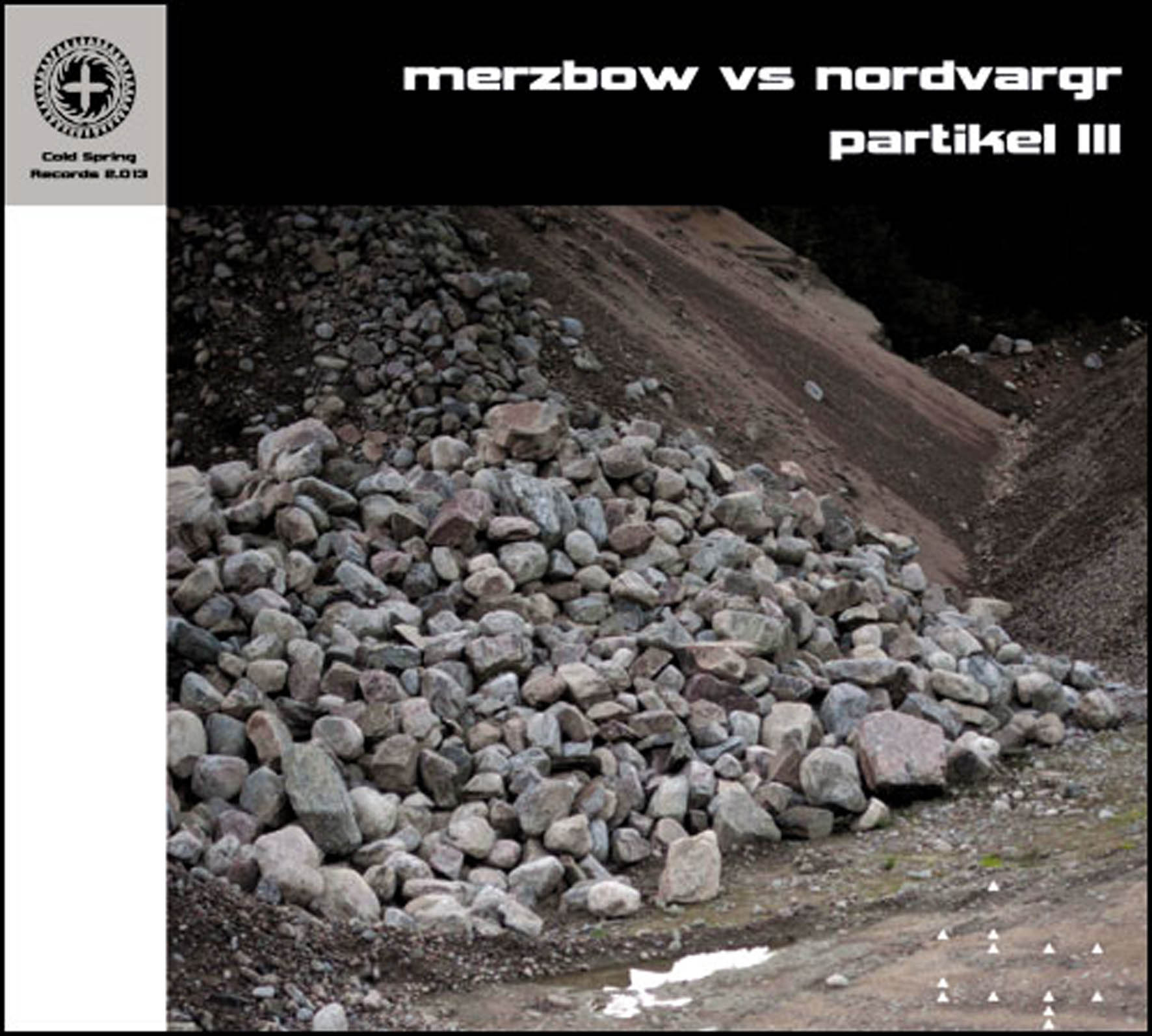 This is the final part of a collaborative trilogy that Henrik Nordvargr Björkk and Masami Akita began back in 2004 and it reaffirms my long-standing belief that Merzbow is almost always more compelling when he is working with other people.  While the two artists divided up creating the raw material for the album, the end result certainly sounds like the duo shared a common vision.  For the most part, the blend of brooding synth drones, subtle pulsing, and Merz-blasts of white noise and dissonant feedback works beautifully, but Henrik and Masami admittedly lose a bit of steam over the album's second half when they ill-advisedly flog a single simple motif for almost half an hour.  Up until that point, however, Partikel III is a quite stellar effort.
This is the final part of a collaborative trilogy that Henrik Nordvargr Björkk and Masami Akita began back in 2004 and it reaffirms my long-standing belief that Merzbow is almost always more compelling when he is working with other people.  While the two artists divided up creating the raw material for the album, the end result certainly sounds like the duo shared a common vision.  For the most part, the blend of brooding synth drones, subtle pulsing, and Merz-blasts of white noise and dissonant feedback works beautifully, but Henrik and Masami admittedly lose a bit of steam over the album's second half when they ill-advisedly flog a single simple motif for almost half an hour.  Up until that point, however, Partikel III is a quite stellar effort.
Lamentably, I have not heard the previous two installments of Partikel, but my tentative hypothesis is that having Masami Akita be the one who starts a piece is generally not a good idea.  Intuitively, it seems like it would be a lot easier to ravage and mutilate something already musical than to try to belatedly turn gnarled chaos into something resembling music and Partikel III seems to fully bear me out on that: the first two pieces (composed by Björkk) are uniformly great, while final two pieces (composed are Akita) are considerably less so, despite there being no noticeable drop in the quality of Merzbow's efforts.
"Heterotic String Hybrid" opens with a surprisingly propulsive techno-inspired beat amidst a sea of subdued white noise before gradually calming down into a nice bit of buzzing, hissing, and brooding ambiance buffeted by woodpecker-like machine noises.  Notably, the duo avoid all of the perils that normally befall dark ambient music, refraining entirely from murky, empty drones; bombast; or a cartoonish degree of gloominess.  Rather, the piece maintains a nicely simmering intensity, as Akita never fully opens up, opting instead for hollow, creepily futuristic beeps and patiently rationed washes of static. Eventually, the beat briefly returns before the piece ends abruptly around the 8-minute mark, making it quite possibly the first time that I have ever wished a Merzbow song had gone on longer.  That is not to say that I do not sometimes love Merzbow, but I usually think more along the lines of "woah" or "i think my ears are bleeding" than "gosh, Akita should have really allowed himself more time to develop that theme."
"Lorentz Covariance" is similarly wonderful, offering up a deep, restrained pulse, stuttering sub-bass, and more inhuman, sci-fi electronic chaos.  Akita gets a bit more violent on this piece, eventually unleashing a torrent of squiggling, howling noise, but it feels well-earned when the eruption finally comes, as it was elegantly preceded by a slow and somewhat strangled build-up.  Also, even the expected firestorm offers quite a bit of (comparative) nuance, as quite a bit of chirping and throbbing almost-music bursts through the surrounding squall (there's even a looped, blown-out beat at one point).  While it is definitely still "noise," it nonetheless manages to feel like it is not far removed from an especially crazy space-rock crescendo instead. Also, I was again sorry to see the piece end, even after another healthily long 8-minute duration.
Unfortunately, all that delightful momentum and wanting of more dissipates rapidly once the duo launch into the album's ostensible centerpiece, the two-part "Submaton Color."  The problem is quite simple to identify, as it stretches on for over half an hour and is built upon a relentless, unchanging synth bass line that sounds like it was plucked from some aggressive '90s industrial dancefloor hit.  Akita gamely tries to keep things interesting by working with mostly dissonant, clashing feedback tones rather than harsh noise, but the thick, throbbing synth hook is just too distracting for it to quite work.
It is actually quite a perverse inversion, as the underlying song is far more forceful than Akita's electronics, yet it is too maddeningly heavy-handed and one-dimensional to enjoy at all.  I fleetingly thought that the piece might be dramatically better if all of Björkk's music was removed (it literally sounds like he just hit "play" on a loop and wandered away), but the Merzbow component is probably far too sparse and slow-building to work on its own.  Gradually, Akita's noise snowballs enough to eclipse the music and things get better, but not nearly enough to justify the wildly indulgent duration and slow build-up.
Despite ending with such a prolonged miscalculation, I was actually quite impressed with this release, as its high points rank among some of the best work that I have heard from Akita.  Also, Partikel III can easily be made into a near-perfect album by simply skipping the 14-minute "Submaton Color, Pt. 1," as the superior second part opens with the synthesizer getting completely eclipsed by the noise storm (or just fading out altogether).  While that basically leaves only a very good Merzbow piece rather than a very good Merzbow and Nordvargr piece (aside from perhaps the cool machine-like throb at the end), the rest of the album otherwise feels like much more than the sum of its parts.  I will definitely be going back to investigate the previous two Partikel installments.
 
Read More
- Administrator
- Albums and Singles
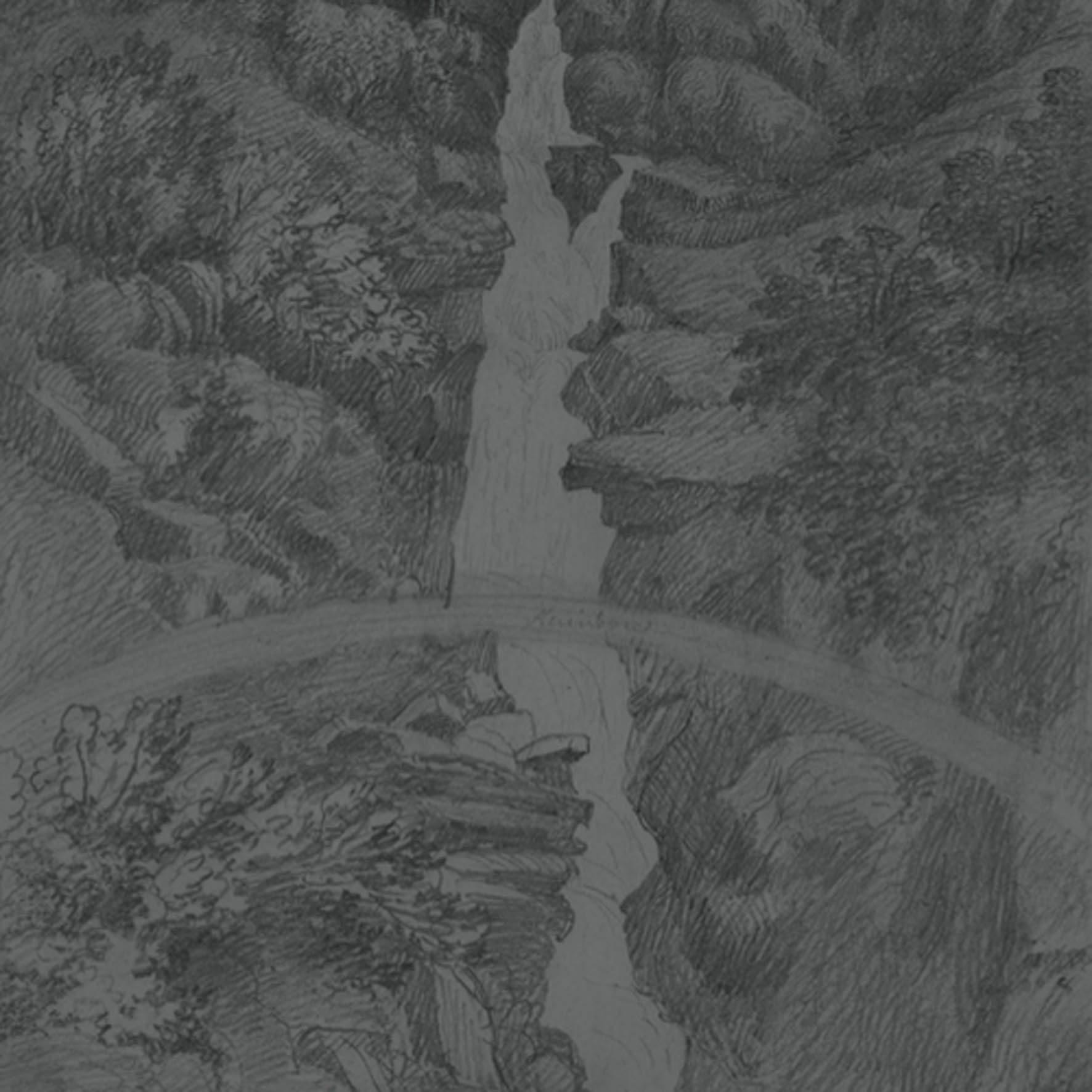 This is the first LP by this Northern California sound artist, but he has been active for almost a decade and is most closely associated with the scene around the excellent Root Strata label.  Students of Decay is another appropriate home for Davis though, as Ask the Dust (a rare John Fante reference!) offers up quite a bit of warm drone that also dabbles its toes a bit in stuttering electronic chaos, field recordings, and more formal composition.  Ultimately, it is a bit too chameleonic and intermittently pastoral to fully work for me as a complete work, but several of the individual pieces are quite wonderful.
This is the first LP by this Northern California sound artist, but he has been active for almost a decade and is most closely associated with the scene around the excellent Root Strata label.  Students of Decay is another appropriate home for Davis though, as Ask the Dust (a rare John Fante reference!) offers up quite a bit of warm drone that also dabbles its toes a bit in stuttering electronic chaos, field recordings, and more formal composition.  Ultimately, it is a bit too chameleonic and intermittently pastoral to fully work for me as a complete work, but several of the individual pieces are quite wonderful.
The album begins with its one of its finest and most ambitious pieces, the 12-minute "Superpartner," which languorously and beautifully drifts through moods and motifs like a constantly shifting dream.  While quite a bit of it could reasonably be described as "drone," Davis rarely dwells on one theme for very long and embellishes even the simplest parts with unusual textures and gently hallucinatory sounds.  Also, the whole thing feels "real" rather than heavily laptop-processed (despite its occasional synth-y flanging and its electronically blurting and blooping crescendo), as John uses a lot of clear metallic textures and skillfully employs field recordings to provide a fleeting and unstable sense of place.
Unfortunately, the album starts to lose momentum a bit with the shorter "Joy Meridian" which treads into fairly straightforward "laptop drone" territory, albeit with harsher buzzing than usual and some hazily fluttering notes in the upper registers.  The following "Palestrina" returns to quite similar territory, but does so much more successfully, as it combines a lushly warm bed with a vibrant host of skipping, stuttering, and swelling sounds that reminds me of some of Area C's better work.
The album's centerpiece, the 16-minute "Synecdoche," initially seems to derail the album yet again, as it opens with a bittersweet, but far too pleasant and straightforward piano performance. Thankfully, that segment abruptly ends with a lot of clattering and crashing and the piece begins in earnest around the 4-minute mark with a sustained swell of heavenly synth thrum gradually made faintly uneasy by an unstably throbbing low-end.  After a mercifully brief segue into rather generic drone, Davis deftly steers the piece into significantly more disturbed territory with murky, uncomfortably dissonant harmonies before ultimately giving way to a quivering and twinkling treated-guitar coda.  Curiously, Davis then follows what would have been a fine ending with a few minutes of machine noise followed by the return of the piano, though it is artfully blurred and smeared this time around.
The closing "Julian Wind" provides an especially surreal and curious conclusion to an already very surreal and curious album, as it sounds like someone sadly playing a melodica by the ocean, only there seems to also be a steel band distantly playing underwater...and then it all ends with a very creepy and unsettling snatch of film or interview dialogue.  That was a great way to end the album, as it sharply reminded how pleasantly disorienting the entire experience had been.
On balance, Ask the Dust is very good album, but not an unqualified success by any means.  Rather, its many flaws are cancelled out by its admirable ambitions and masterful execution.  John Davis definitely did not set out to make a standard-issue drone album and he proved himself to be very good at realizing almost everything he set out to do–a noble effort was certainly made.  The only catch is that none of John's great ideas are given much time to fully bloom, nor do any motifs ever recur to give Ask the Dust the feel of something larger than a collection of five songs, unless the overarching narrative Davis was going for was "change is constant."  On the bright side, that also means that none of Davis's weaker ideas stick around for long, but I spent the bulk of the album alternately thinking "this is great!" and "wait- why are you stopping!?!"
Samples:
 
 
Read More
